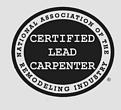Should You Participate In LinkedIn Discussions If They Are Moderated?

Recently I have noticed that several different discussions in the groups I follow on LinkedIn are now being moderated. When I submit a comment I get a message that my comment will be reviewed by the moderator before it is posted. I have decided I will no longer participate in these moderated discussions. The problem is I haven’t yet figured out how to tell if a discussion is being moderated until I hit the submit button. Does anyone know if there is a way to tell if a specific discussion or group is moderated?
I understand that some moderators with good intentions may be trying to eliminate the non-professional comments and personal attacks. If you frequent LinkedIn groups with contractors as members you have probably noticed that there are some members who resort to foul language, unprofessional comments and even personal attacks. I have also noticed one particular commenter who seems to always find something wrong with someone’s opinion and proceeds to kill the purpose of any discussion simply by participating.
Top two reasons why I have decided not to participate
First, my feeling is that they are not discussions if someone can decide whether or not they want my comment to be part of the discussion. I say this because I have noticed both on LinkedIn and on several different national newspaper sites I visited and commented on the moderator limits the comments to only those that support their own opinions and or to control the direction of the conversation. We live in a free country where our freedom to express our opinions differentiates us from many other countries on this planet. It pains me to see that some are trying to take that freedom away from us to serve their own purposes and or to purposely mislead readers.
- My second reason is because unless comments are posted instantly, and someone reading the comment can in turn instantly respond with another comment, it’s not a discussion. Instead it becomes a collection of thoughts. Think about it. Unless the moderator is sitting at his or her computer waiting for the next comment, there will be gaps in time between when the submit button is clicked and the moderator reviews the comment to decide to post it or not. This being the case I have already noticed that the comments, when eventually approved, become out of order and out of context. That’s not a discussion.

I think both reasons above are actually starting to reduce the conversations at these sites and is already compromising our industry’s ability to openly share information and help each other. This is a very bad thing for our industry.
I see and offer three options to address this concern about discussion moderation.
- LinkedIn could make it obvious to group members which discussions are moderated. I think this should be done in an obvious way right within the discussion’s description at the top of the page. If every discussion posted to the group will be moderated, I think that needs to be obvious as well. Also, to avoid wasting time, I think all moderated discussions should somehow be flagged within in the emails we all receive as group members letting us know about new discussions and new comments on existing discussions. If done this way we can decide for ourselves if we want to participate or not, in a discussion and or a group.
If group members are behaving in an inappropriate and or unprofessional manner, there should be a defined way to have their ability to participate in the current discussion instantly terminated. And, if they have been terminated from a certain number of previous discussions, perhaps they should be permanently removed from the group, maybe even from LinkedIn.
- The last one I offer is the one I hope doesn’t become the default choice. With this third option those of you who feel the same way about this as me will have no choice but to discontinue our participation and or membership in a group that allows moderation of comments before they are posted.
We can be frank, but we must remain professional
 I hope those of you reading this see my purpose in writing this as a genuine attempt to protect the value we get and enjoy from productive and professional discussions at social media sites and online discussions. To protect and facilitate discussions where all members can openly share advice and opinions without the risk of attacks and being subjected to foul language. As one frustrated commenter put it, LinkedIn should be a place where we can safely ask questions and as true professionals safely help each other improve our businesses and our lives. If you have a suggestion to help accomplish this, I hope you will add it to the list I offered above.
I hope those of you reading this see my purpose in writing this as a genuine attempt to protect the value we get and enjoy from productive and professional discussions at social media sites and online discussions. To protect and facilitate discussions where all members can openly share advice and opinions without the risk of attacks and being subjected to foul language. As one frustrated commenter put it, LinkedIn should be a place where we can safely ask questions and as true professionals safely help each other improve our businesses and our lives. If you have a suggestion to help accomplish this, I hope you will add it to the list I offered above.
What say you?
 If you agree something must be done about this concern please make others aware of this blog post so they can speak their views as well. Although I will post this blog to LinkedIn discussion groups, I cannot know for sure or control whether they are being moderated or not. If you find this article via LinkedIn, rather than post your comment on LinkedIn, post it here. I promise I won’t moderate the comments you leave here at my blog, every comment will be posted right away. I have and will however delete inappropriate comments and or comments with foul language. My blog use policy can be viewed here.
If you agree something must be done about this concern please make others aware of this blog post so they can speak their views as well. Although I will post this blog to LinkedIn discussion groups, I cannot know for sure or control whether they are being moderated or not. If you find this article via LinkedIn, rather than post your comment on LinkedIn, post it here. I promise I won’t moderate the comments you leave here at my blog, every comment will be posted right away. I have and will however delete inappropriate comments and or comments with foul language. My blog use policy can be viewed here.



 All this leads to my ability to help my targeted customer types find me and find out what it will be like to work with me as their coach or mentor before they contact me about my services. The experience of getting my own web site up, learning about using it as a marketing tool and the success I have had using it as a tool has also given me the ability to help my contractor coaching clients get on the right path with their own web sites!
All this leads to my ability to help my targeted customer types find me and find out what it will be like to work with me as their coach or mentor before they contact me about my services. The experience of getting my own web site up, learning about using it as a marketing tool and the success I have had using it as a tool has also given me the ability to help my contractor coaching clients get on the right path with their own web sites! If your business doesn’t yet have a web site, or the one you have isn’t helping your target customers find you like mine helps me, don’t make the mistake of working with the wrong web site designer. Here are a few “red flags” to watch for as you either work with your current designer or as you interview one to work with.
If your business doesn’t yet have a web site, or the one you have isn’t helping your target customers find you like mine helps me, don’t make the mistake of working with the wrong web site designer. Here are a few “red flags” to watch for as you either work with your current designer or as you interview one to work with. If they offer to help you with SEO, but never ask you who your target customers, job types and market area are you may get visits to your site but you will probably never be able to covert those visits into paying customers.
If they offer to help you with SEO, but never ask you who your target customers, job types and market area are you may get visits to your site but you will probably never be able to covert those visits into paying customers.
 “A lead carpenter is involved in tasks and has responsibilities beyond the technical production aspects of a project. He/she is responsible for customer contact and communication, supervision of subcontractors and employees, managing the job site, scheduling, and safety issues. The success of a remodeling project during the production stage is the primary responsibility of the lead carpenter.”
“A lead carpenter is involved in tasks and has responsibilities beyond the technical production aspects of a project. He/she is responsible for customer contact and communication, supervision of subcontractors and employees, managing the job site, scheduling, and safety issues. The success of a remodeling project during the production stage is the primary responsibility of the lead carpenter.” Customer Satisfaction
Customer Satisfaction For example, if your business can't or won't share the
For example, if your business can't or won't share the  I am also aware of true lead carpenters who were hired as lead carpenters only to find out that they couldn't act as lead carpenters at the business that hired them because of the reasons shared above. When they find these conditions at their new job they quickly realize their opportunities for career and compensation growth are dramatically compromised. So many left for a different business and opportunity where they could use their skills and continue to advance their careers.
I am also aware of true lead carpenters who were hired as lead carpenters only to find out that they couldn't act as lead carpenters at the business that hired them because of the reasons shared above. When they find these conditions at their new job they quickly realize their opportunities for career and compensation growth are dramatically compromised. So many left for a different business and opportunity where they could use their skills and continue to advance their careers.

 The second is those who, lacking insight, simply don’t know what else to consider when deciding between contractors so they base their decisions on the bottom line. These people may actually be willing to pay more when selecting one contractor over another, but the contractor must be a true sales person to help them discover other more important things to consider.
The second is those who, lacking insight, simply don’t know what else to consider when deciding between contractors so they base their decisions on the bottom line. These people may actually be willing to pay more when selecting one contractor over another, but the contractor must be a true sales person to help them discover other more important things to consider.  Decide to do something about it and get some professional sales training and coaching.
Decide to do something about it and get some professional sales training and coaching. They see remodeling as a commodity where every contractor and proposal are the same, not a service where one company does things differently than another.
They see remodeling as a commodity where every contractor and proposal are the same, not a service where one company does things differently than another. They will typically dispute your payment schedule, make scheduled progress payments late and delay your final payment as long as they can.
They will typically dispute your payment schedule, make scheduled progress payments late and delay your final payment as long as they can.

 I work with many companies in transition. The steps from being a “guy and a truck” to having an office and a bookkeeper and field employees are frequently challenging, but the milestones are pretty easy to identify. Ray the Remodeler used to work out of his house, but now he’s got an office. Bill the Builder used to pound nails, but now he does sales and supervises a crew. A less easily-measured but potentially even more important milestone is when the owner is able to recognize and maintain separation between himself (his personality, his idiosyncrasies, his strengths and weaknesses, his preferences, and his habits) from the company for the sake of the business.
I work with many companies in transition. The steps from being a “guy and a truck” to having an office and a bookkeeper and field employees are frequently challenging, but the milestones are pretty easy to identify. Ray the Remodeler used to work out of his house, but now he’s got an office. Bill the Builder used to pound nails, but now he does sales and supervises a crew. A less easily-measured but potentially even more important milestone is when the owner is able to recognize and maintain separation between himself (his personality, his idiosyncrasies, his strengths and weaknesses, his preferences, and his habits) from the company for the sake of the business. Adding the trappings of a business (office, staff) without shifting attitudes about the business has held many owners back and limited the potential growth of their companies. As long as they see themselves as remodelers, rather than owners of businesses that deliver the service of remodeling, they risk seeing their businesses as extensions of themselves, reflecting their own strengths and weaknesses. They also tend to see their companies as being so unique that they can’t be run using best business practices.
Adding the trappings of a business (office, staff) without shifting attitudes about the business has held many owners back and limited the potential growth of their companies. As long as they see themselves as remodelers, rather than owners of businesses that deliver the service of remodeling, they risk seeing their businesses as extensions of themselves, reflecting their own strengths and weaknesses. They also tend to see their companies as being so unique that they can’t be run using best business practices. Chase profit, not dollars. When owners start talking about how much their sales have increased, I remain unimpressed. Sales are nothing. Profit is where it’s at. Let’s say your volume is $600,000 in year 1 and $900,000 in year 2. A 50% increase, right? Wonderful, right? Maybe yes, and maybe no. If in order to sell and produce 50% more you had to hire a production manager, an estimator, and a salesperson and that caused a significant increase in your overhead, you could wind up with a lower net margin at the end of year 2. You might even end up with fewer actual dollars of profit to say nothing of the added stress of running more or bigger jobs. Know what numbers to watch, how to interpret them, and what to do to improve them.
Chase profit, not dollars. When owners start talking about how much their sales have increased, I remain unimpressed. Sales are nothing. Profit is where it’s at. Let’s say your volume is $600,000 in year 1 and $900,000 in year 2. A 50% increase, right? Wonderful, right? Maybe yes, and maybe no. If in order to sell and produce 50% more you had to hire a production manager, an estimator, and a salesperson and that caused a significant increase in your overhead, you could wind up with a lower net margin at the end of year 2. You might even end up with fewer actual dollars of profit to say nothing of the added stress of running more or bigger jobs. Know what numbers to watch, how to interpret them, and what to do to improve them. Stop trying to do everything yourself. If you haven’t already figured this stuff out on your own, hire somebody who has helped hundreds of contractors understand their numbers, replace habits with systems, and achieve a healthier relationship with their business. Comments from my clients reveal that many contractors struggle with the business side of things. Would you like to move “…from being clueless & frustrated to confident and comfortable….”? Would you find it “…refreshing to speak with someone who actually knew what they were doing, understood what (you were) trying to accomplish, and just made it happen.”? Are you sick of being “…lost in a sea of numbers…”?
Stop trying to do everything yourself. If you haven’t already figured this stuff out on your own, hire somebody who has helped hundreds of contractors understand their numbers, replace habits with systems, and achieve a healthier relationship with their business. Comments from my clients reveal that many contractors struggle with the business side of things. Would you like to move “…from being clueless & frustrated to confident and comfortable….”? Would you find it “…refreshing to speak with someone who actually knew what they were doing, understood what (you were) trying to accomplish, and just made it happen.”? Are you sick of being “…lost in a sea of numbers…”?
 To do a successful quote for a 203K loan you must write a detailed line item bid, you should do this anyway but what works best is to break out your costs.
To do a successful quote for a 203K loan you must write a detailed line item bid, you should do this anyway but what works best is to break out your costs. The consultant then inspects and approves your completed work. If you are installing vinyl windows at $1000 each and I get there and five are installed I will allow payment for five windows or $5000. The five windows you say you will do after lunch don't count and the fact they are sitting in the living room means nothing to the bank. These draws (up to 5 are allowed) cost the homeowner $150 to $250 each, so we try to use them to the best effect. If you run out of money consultants will do more draws but the consultant will get a check from you the contractor when he visits.
The consultant then inspects and approves your completed work. If you are installing vinyl windows at $1000 each and I get there and five are installed I will allow payment for five windows or $5000. The five windows you say you will do after lunch don't count and the fact they are sitting in the living room means nothing to the bank. These draws (up to 5 are allowed) cost the homeowner $150 to $250 each, so we try to use them to the best effect. If you run out of money consultants will do more draws but the consultant will get a check from you the contractor when he visits. No payments are disbursed unless you show proof of permits.
No payments are disbursed unless you show proof of permits.
 Here are a few times when saying nothing might just be the best thing to say:
Here are a few times when saying nothing might just be the best thing to say:
 A good number of contractors at one time or another find themselves in a financial hole. Rather than figure out how they got there, they just keep working, often assuming by working harder or longer hours they will eventually get out of the hole. Unfortunately many of them just dig a deeper hole and eventually the hole is so deep they can’t climb out so they stay in it. Sometimes the hole can even cave in all around them and bury them and their businesses. If you want to avoid the most common reasons contractors get into financial trouble
A good number of contractors at one time or another find themselves in a financial hole. Rather than figure out how they got there, they just keep working, often assuming by working harder or longer hours they will eventually get out of the hole. Unfortunately many of them just dig a deeper hole and eventually the hole is so deep they can’t climb out so they stay in it. Sometimes the hole can even cave in all around them and bury them and their businesses. If you want to avoid the most common reasons contractors get into financial trouble 
 Pricing your work without knowing the true cost of being in business is referred to as using the "WAG" method, or “Wild Ass Guess” method. Unless a business knows what markup to use to determine the right selling price it puts itself at risk of actually buying jobs instead of selling them. Unless you know your minimum required markup to cover overhead, how do you know how low you can go when the prospect wants to negotiate?
Pricing your work without knowing the true cost of being in business is referred to as using the "WAG" method, or “Wild Ass Guess” method. Unless a business knows what markup to use to determine the right selling price it puts itself at risk of actually buying jobs instead of selling them. Unless you know your minimum required markup to cover overhead, how do you know how low you can go when the prospect wants to negotiate? This is like a Super-Sized WAG! Unless you use a single across the board markup on all estimated costs, you will need to be very accurate when anticipating how much you will sell of, and how much you will markup, each category of costs your business includes in estimates throughout the course of the year. Most contractors who do this have no idea how to do so. Keep in mind that if you do drop the markup on one item you will need to increase the markup on another to make up for the drop in gross profit dollars on the first one. One contractor I know said he believed contractors who use this method have what he called “Head Trash” about money. He went on to say they should “get over it” and should learn how to sell.
This is like a Super-Sized WAG! Unless you use a single across the board markup on all estimated costs, you will need to be very accurate when anticipating how much you will sell of, and how much you will markup, each category of costs your business includes in estimates throughout the course of the year. Most contractors who do this have no idea how to do so. Keep in mind that if you do drop the markup on one item you will need to increase the markup on another to make up for the drop in gross profit dollars on the first one. One contractor I know said he believed contractors who use this method have what he called “Head Trash” about money. He went on to say they should “get over it” and should learn how to sell. First, this assumes the contractor even does job costing, most don’t. As one example I estimate that fewer than 10% of contractors can job cost their labor costs the same way they estimate them. If you use a burdened labor rate to estimate the dollar cost of task hours, your total labor cost will include things like workers comp insurance, non-productive time and employee benefits. If you use QuickBooks for job costing, and you enter employee time card information into QuickBooks, typically only the employees wage and employer paid payroll taxes are expensed against the job budget in job cost reports. This will falsely make the actual labor cost appear much lower than the labor budget from your estimate. To solve this, use
First, this assumes the contractor even does job costing, most don’t. As one example I estimate that fewer than 10% of contractors can job cost their labor costs the same way they estimate them. If you use a burdened labor rate to estimate the dollar cost of task hours, your total labor cost will include things like workers comp insurance, non-productive time and employee benefits. If you use QuickBooks for job costing, and you enter employee time card information into QuickBooks, typically only the employees wage and employer paid payroll taxes are expensed against the job budget in job cost reports. This will falsely make the actual labor cost appear much lower than the labor budget from your estimate. To solve this, use  If you sell work that you won’t be starting for some time, in your estimates you will needed to include the actual costs you will incur at the time you produce the work. If you don’t do so the extra costs will eat away at your planned net profit until it’s gone. If the extra costs exceed your anticipated net profit you will need to use your own money to finish that customer’s job. Keep in mind that some reports anticipate many construction materials will increase in cost as much as 25% this year.
If you sell work that you won’t be starting for some time, in your estimates you will needed to include the actual costs you will incur at the time you produce the work. If you don’t do so the extra costs will eat away at your planned net profit until it’s gone. If the extra costs exceed your anticipated net profit you will need to use your own money to finish that customer’s job. Keep in mind that some reports anticipate many construction materials will increase in cost as much as 25% this year.
 The best way to find out what will motivate team members is to ask them. While interviewing recruits or existing employees, find out not only what motivates them to grow, but also why. Connecting the “why” to the “what” can help get you, your business and that employee to where everyone wants to be much faster for two reasons.
The best way to find out what will motivate team members is to ask them. While interviewing recruits or existing employees, find out not only what motivates them to grow, but also why. Connecting the “why” to the “what” can help get you, your business and that employee to where everyone wants to be much faster for two reasons.
 Include in your record keeping not only the reviewer’s comments, but employee’s feedback about how well the company helps him or her to get there. If your process includes writing down what has been agreed to at this review, both the company and the employee will know what to do between now and the next review. You will also both know what you will be discussing at the next review. This helps minimize the typical fears experienced by both the reviewer and the employee when anticipating the next review meeting and what they should talk about during the next review.
Include in your record keeping not only the reviewer’s comments, but employee’s feedback about how well the company helps him or her to get there. If your process includes writing down what has been agreed to at this review, both the company and the employee will know what to do between now and the next review. You will also both know what you will be discussing at the next review. This helps minimize the typical fears experienced by both the reviewer and the employee when anticipating the next review meeting and what they should talk about during the next review. 
 What is sad to me (and really ridiculous if you think about it) is these business owners are doing the same thing many remodeling consumers do. They hire a service provider to take care of something for them without first being clear on what they expect, or, what they can expect will actually be included if they buy. Then, rather than take responsibility for their own lack of due diligence before buying that service, they rationalize why it’s the service provider’s fault they are not happy and want their money back. You can find lots of evidence to back up this reality by reading just a few of the articles on the
What is sad to me (and really ridiculous if you think about it) is these business owners are doing the same thing many remodeling consumers do. They hire a service provider to take care of something for them without first being clear on what they expect, or, what they can expect will actually be included if they buy. Then, rather than take responsibility for their own lack of due diligence before buying that service, they rationalize why it’s the service provider’s fault they are not happy and want their money back. You can find lots of evidence to back up this reality by reading just a few of the articles on the
 Instead of the old outbound marketing methods of buying ads, buying email lists, paying for lead generation services and praying for good leads, consider the new wave in marketing; “Inbound Marketing”. Inbound marketing focuses on creating quality content on your business’ web site that pulls people toward your company and product. By aligning the content you publish with your target customer’s interests, you naturally attract inbound traffic that you can then convert, close, and delight over time. If visitors to your contractors web site don’t like what they find out about your business and how you do business, they won’t call you or waste your time. In addition to creating high quality leads, done well, inbound marketing can also help you increase the number and quality of referral leads from those customers you have delighted.
Instead of the old outbound marketing methods of buying ads, buying email lists, paying for lead generation services and praying for good leads, consider the new wave in marketing; “Inbound Marketing”. Inbound marketing focuses on creating quality content on your business’ web site that pulls people toward your company and product. By aligning the content you publish with your target customer’s interests, you naturally attract inbound traffic that you can then convert, close, and delight over time. If visitors to your contractors web site don’t like what they find out about your business and how you do business, they won’t call you or waste your time. In addition to creating high quality leads, done well, inbound marketing can also help you increase the number and quality of referral leads from those customers you have delighted. 






